US Military Helmets: The American Evolution
October 11th, 2022
11 minute read
Ask even the most serious or advanced headgear collector what was the first American combat helmet, and you’re likely to get some differing opinions. Most would suggest it was the Model 1917, which was based on the British Mk I steel helmet that was first introduced in 1916. Others will state it was the Liberty Bell, one of several experimental designs developed during the First World War.
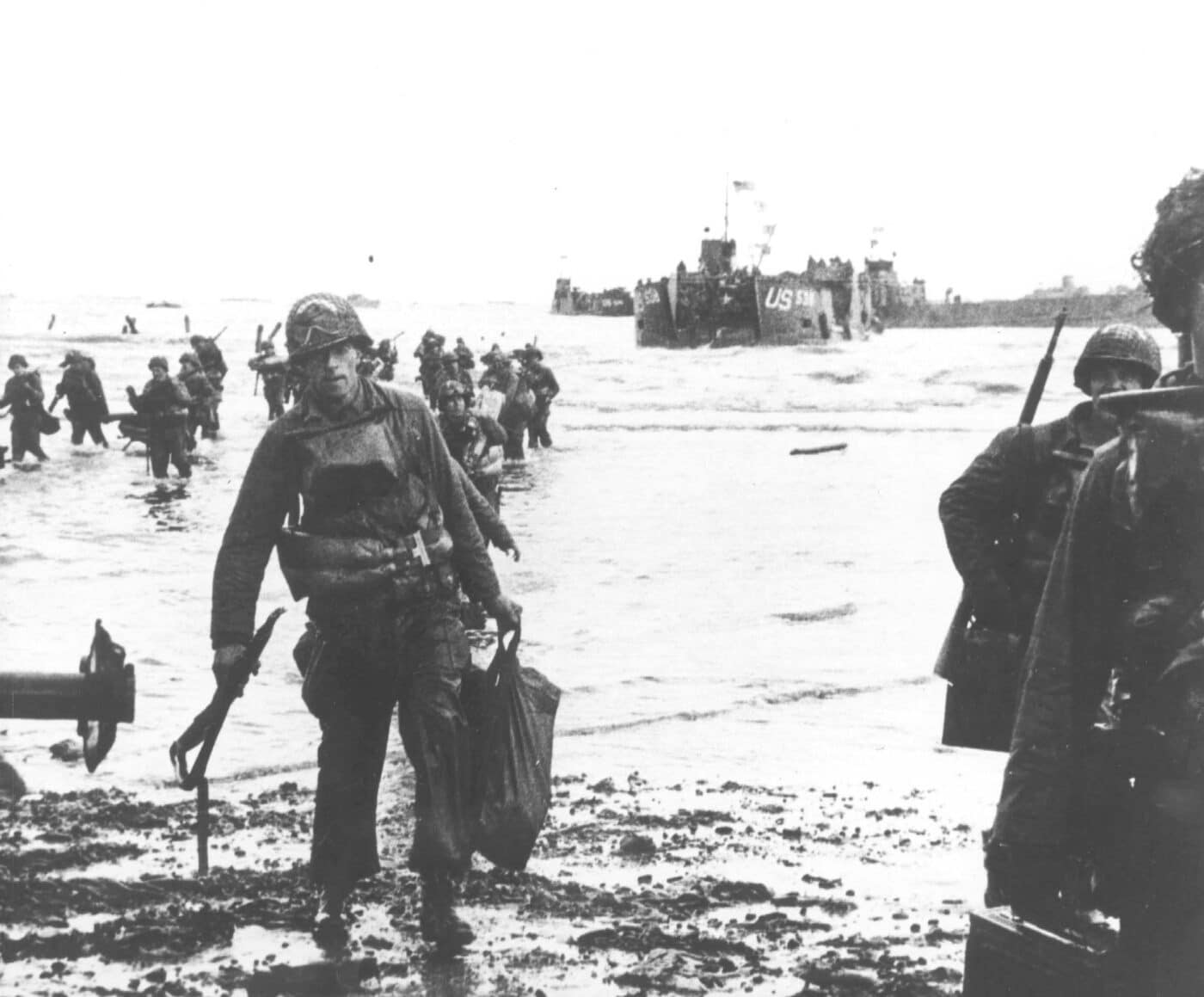
While some collectors may take issue with this sentiment, it could be argued that the officer’s pattern metal helmet worn by the Continental Light Dragoons of the American Revolutionary War has the distinction of being the first true “combat helmet.” While such headdress would later be used only for ceremony, during the period, it was worn on the field of battle as much as on the parade ground.
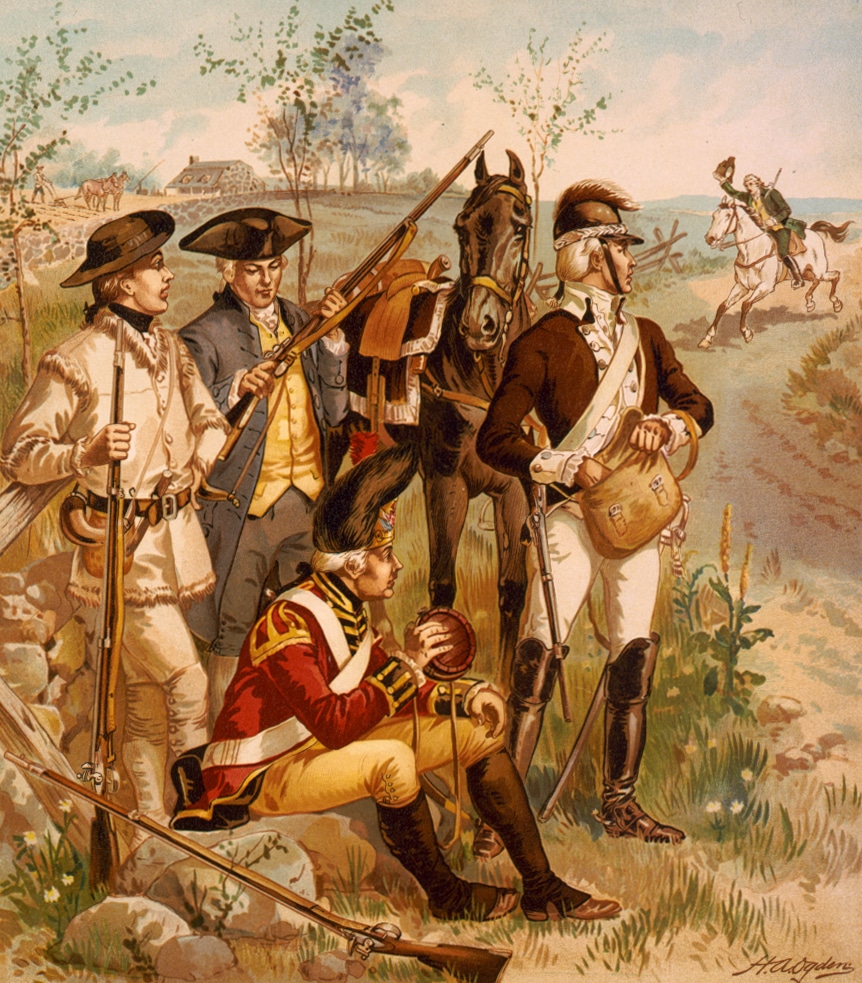
The helmets were domestically produced and based on a French design that really wasn’t all that different from the French heavy cavalry helmets that were still in service in the early stages of the First World War, and which went on to influence the design of the Model 1915 “Adrian” helmet.
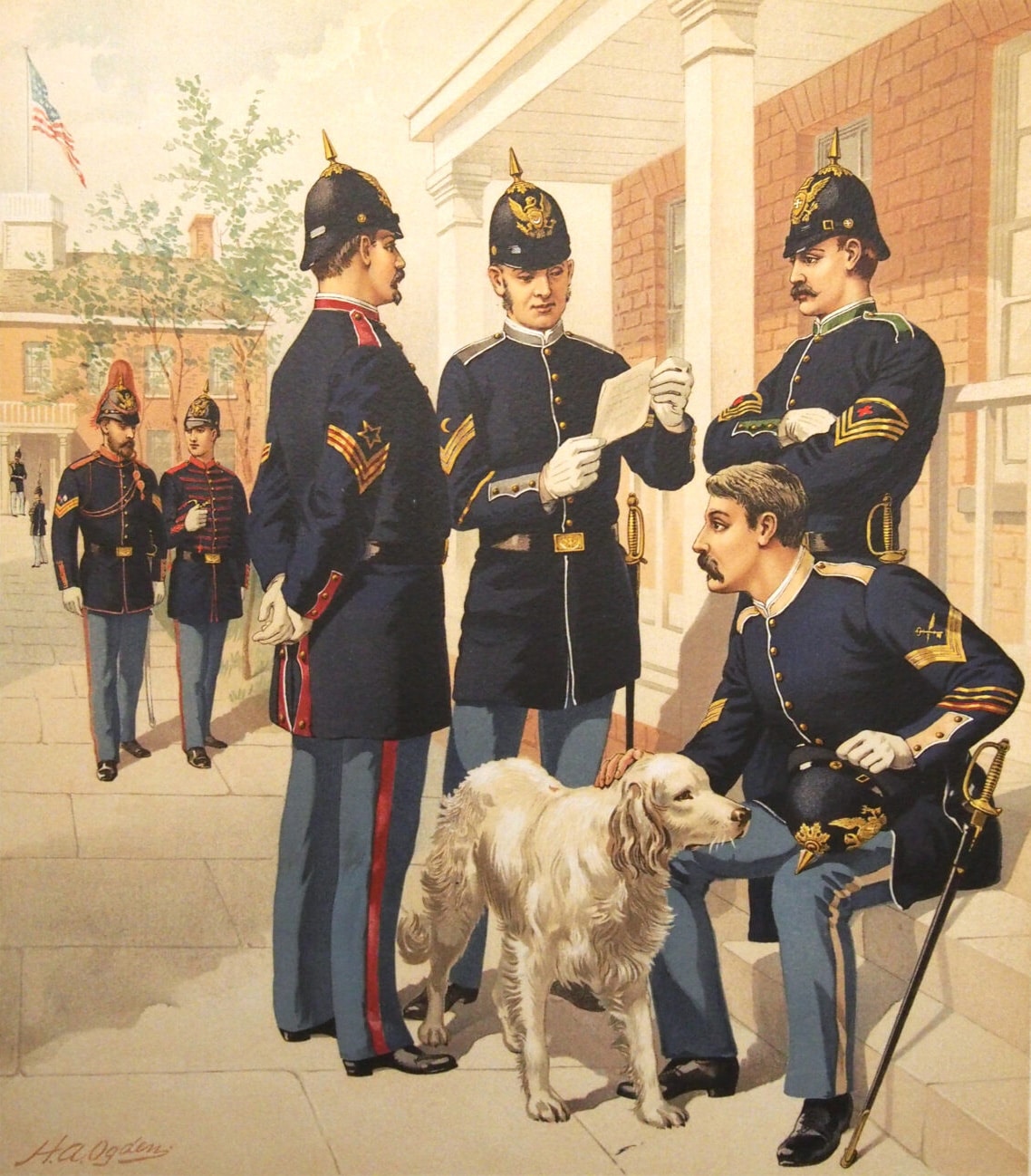
The lines between dress uniform and field uniform largely blurred until after the American Civil War, but even on the frontier, U.S. soldiers were often deployed with their wool frock coats and European-inspired felt helmets that were fitted with either plumes or spikes. Those helmets showed the influence of the Prussian/German pickelhaube and the British home service helmet. But, it is easy to see the American-made helmets, which were largely produced in New York City and Philadelphia, had far more in common with the British designs, which in turn were based on the heavy cavalry dragoon helmets of the era.
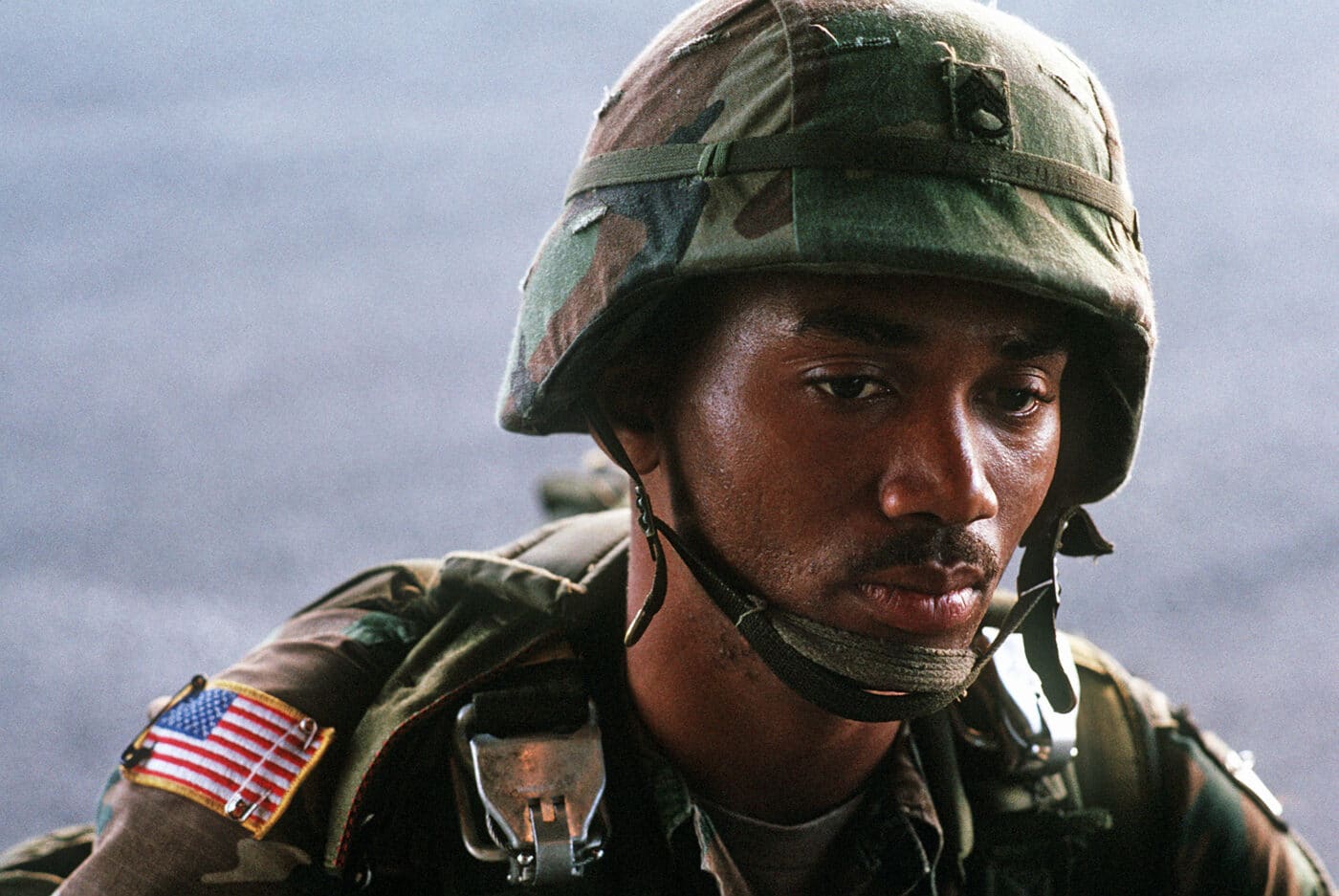
In addition, while never especially popular, American soldiers also wore white and later khaki sun/pith helmets also inspired by the British foreign service helmet. They were used by the United States Army and United States Marine Corps during the Spanish-American War and the largely forgotten Philippine-American War/Moro Rebellion in the early 20th century. In fact, it was only in 1916 that the sun helmets were finally taken out of service by units based in China — just a year before the Americans went “over there” to France and donned the first modern steel combat helmets.
The American Tin Hat
As with the other combatants of “The Great War,” the United States entered the conflict without adequate protection for the new type of warfare that was being fought. American military planners had the luxury to test various helmets that had already been developed, but as there was a need to supply the troops heading to France, the United States military was forced to accept several hundred thousand British Mark I helmets, before domestic production began.
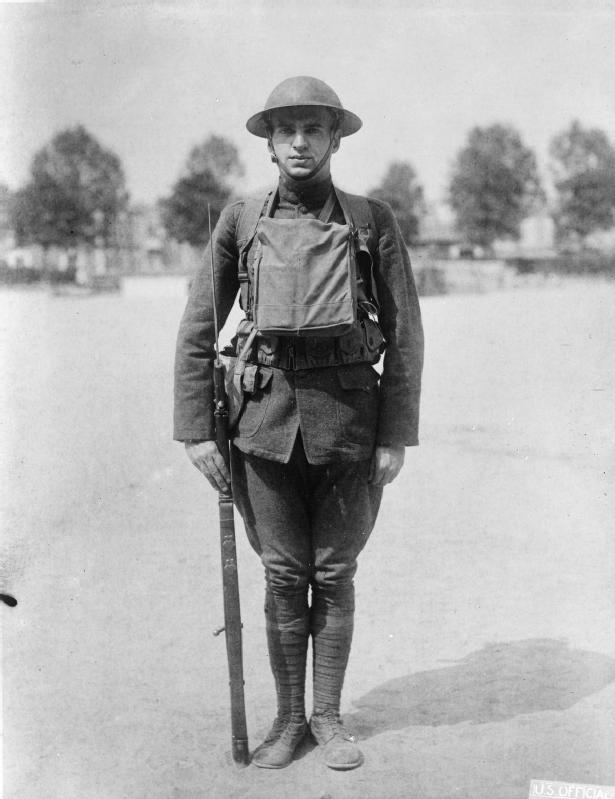
Thus the Americans adopted the British Mk I as the Model 1917. The basic shape and liner system were nearly identical, while there are differences in types of rivets, paint and most notably helmet texture.
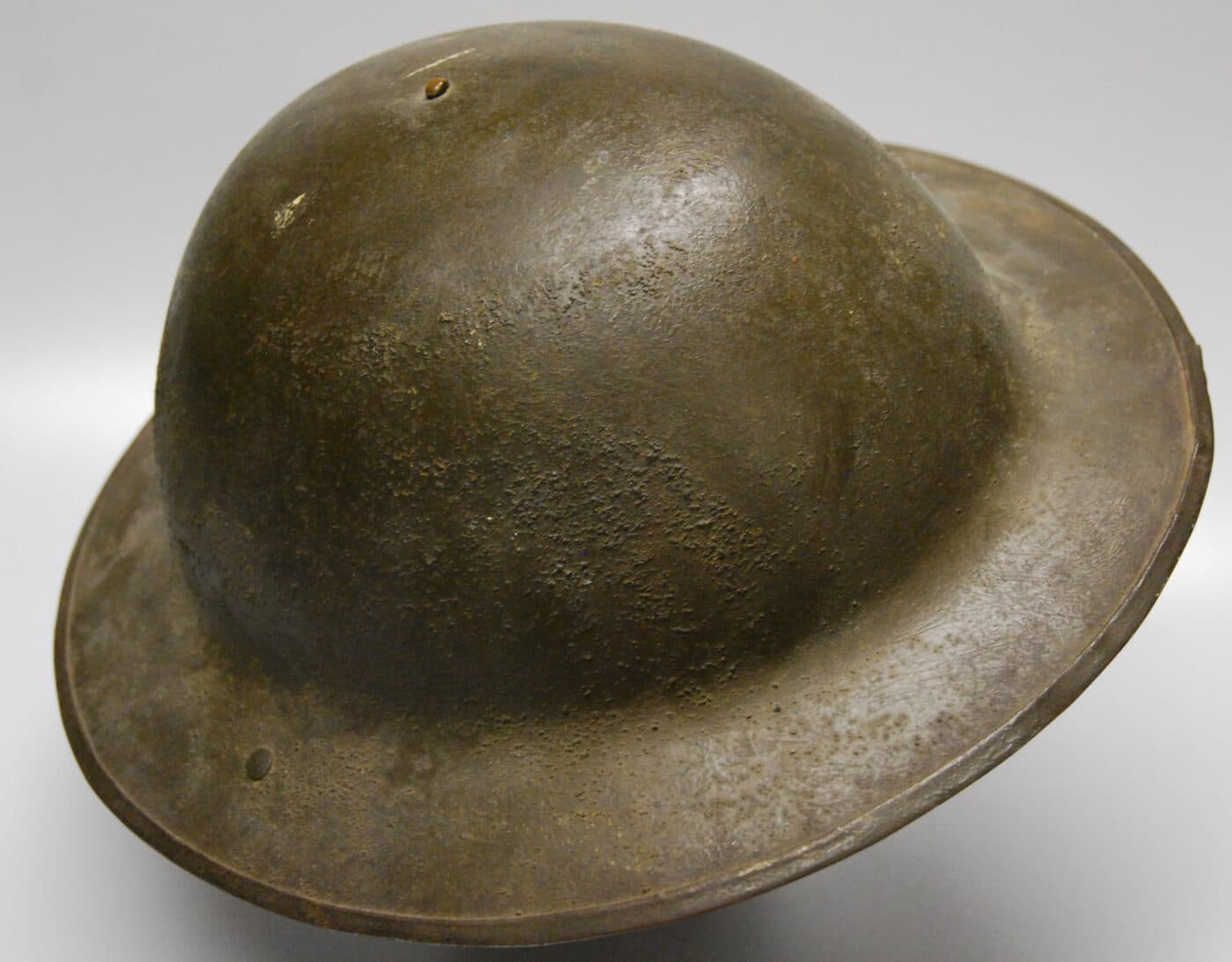
The use of foreign helmets during the First World War was not limited to the British Mk I. The African-Americans volunteers who served in the all-black 93rd Division were supplied with American uniforms but with French equipment, including the Model 1915 “Adrian” steel helmets.
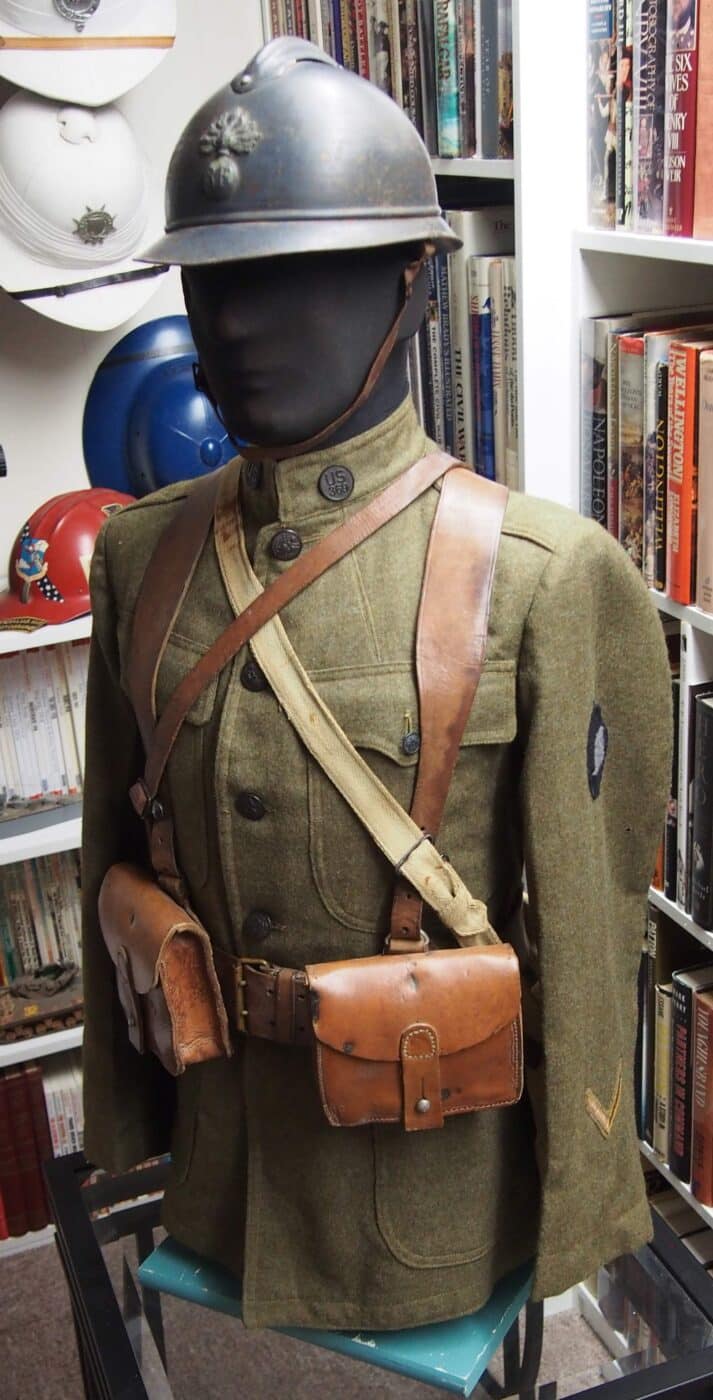
In fact, the helmet had become so closely associated with the unit that a silhouette of the Adrian became the official insignia for the 93rd Division. In addition, American volunteer ambulance drivers also used the Model 1915 helmets with a special badge.
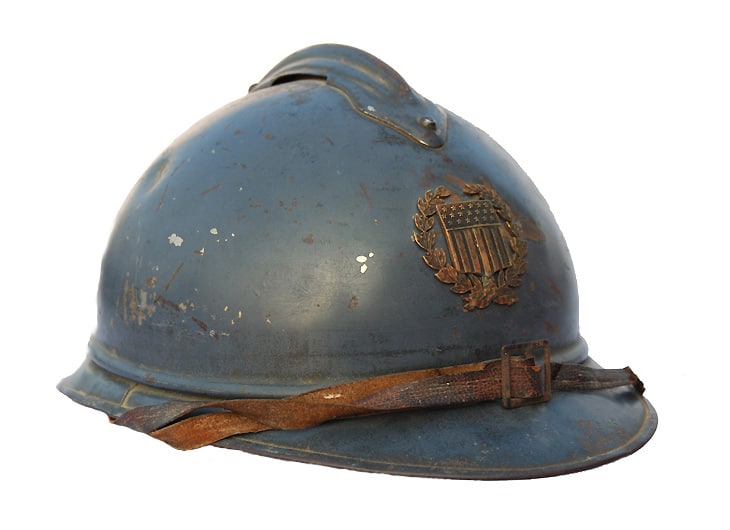
Far from the front, American military planners experimented with an array of designs to protect its soldiers in future conflicts. Various influences including the German M16/18 helmet were taken into account and many of the designs from this period have an almost “medieval” quality to them with visors and even faceplates being employed.
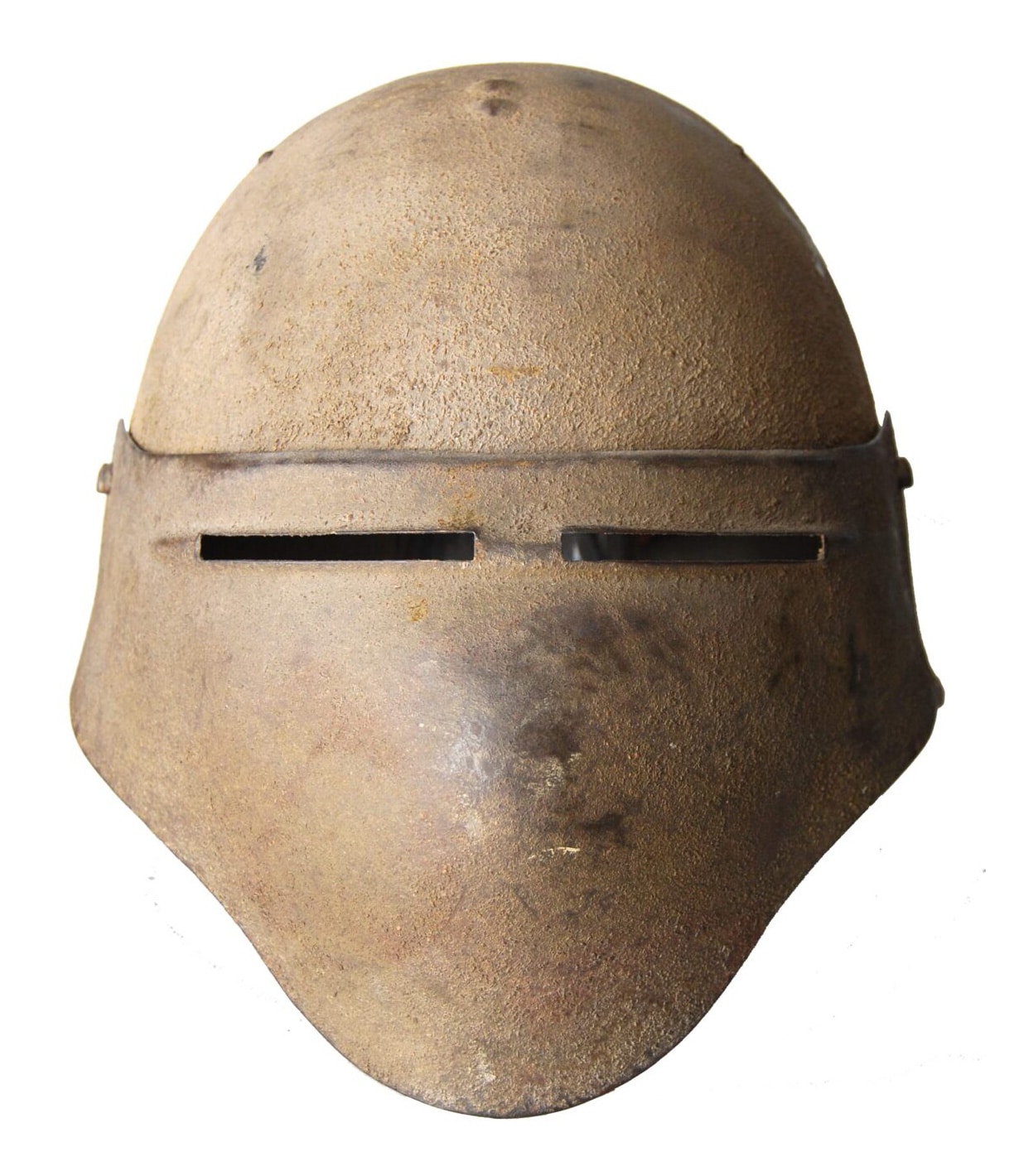
However, the war ended before any of those experimental designs really had a chance to prove their worth, and in the end, the M1917 remained in use in the “Interwar Era.” It was upgraded with an improved liner in the late 1930s as the M1917A1, and was still in use when the United States entered World War II in December of 1941. By that time, however, a new helmet was about to be produced — and it would also remain in use throughout not only the Second World War, but most of the Cold War.
Next Step in American Helmets: The M1
The first American troops to see action in the Second World War fought with the updated version of the World War I Model 1917 helmet, which was known as the “Kelly Helmet.” The M1917A1 was in use in the Philippines and on Wake Island at the start of the war as the new and improved M1 helmet was just beginning the production phase.
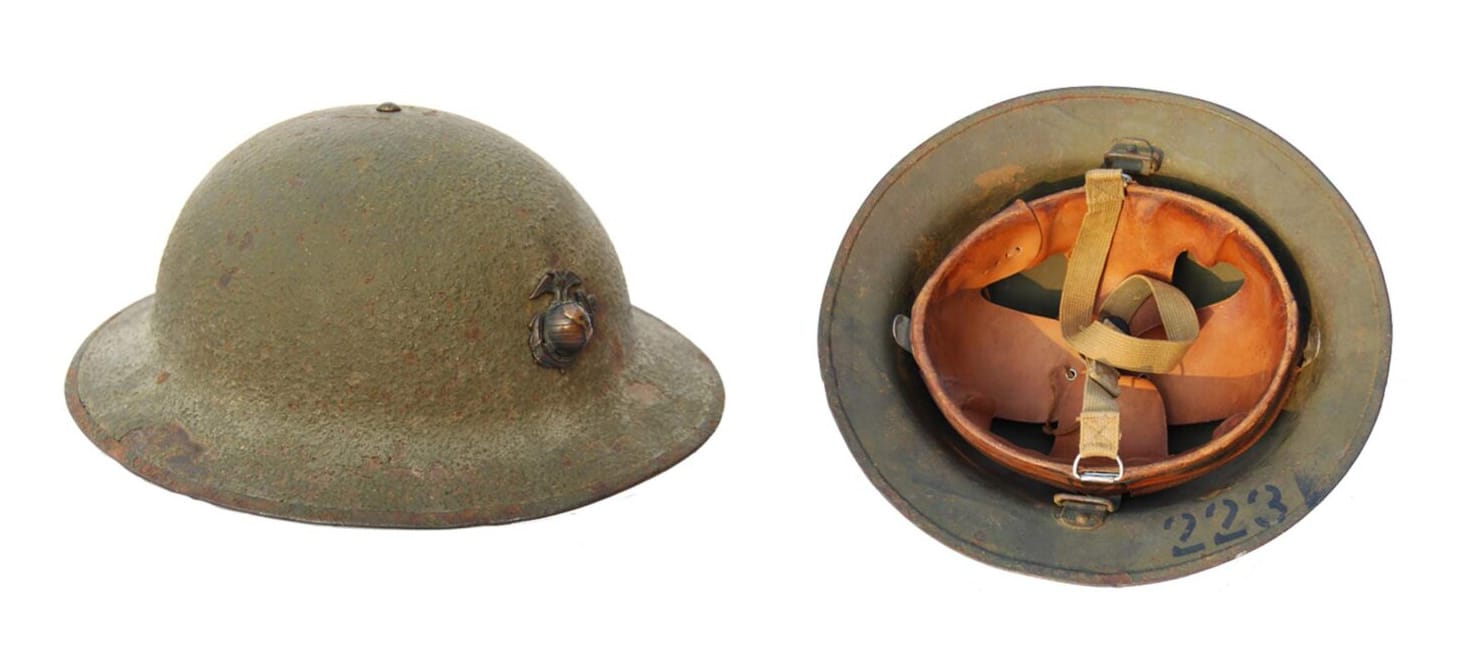
This new M1 helmet, which was developed in the late 1930s, proved to be a true piece of American ingenuity, the first modern helmet designed as a two-piece system where the suspension system (or liner) was to be constructed of a lightweight material while the protective steel shell would be worn over it.
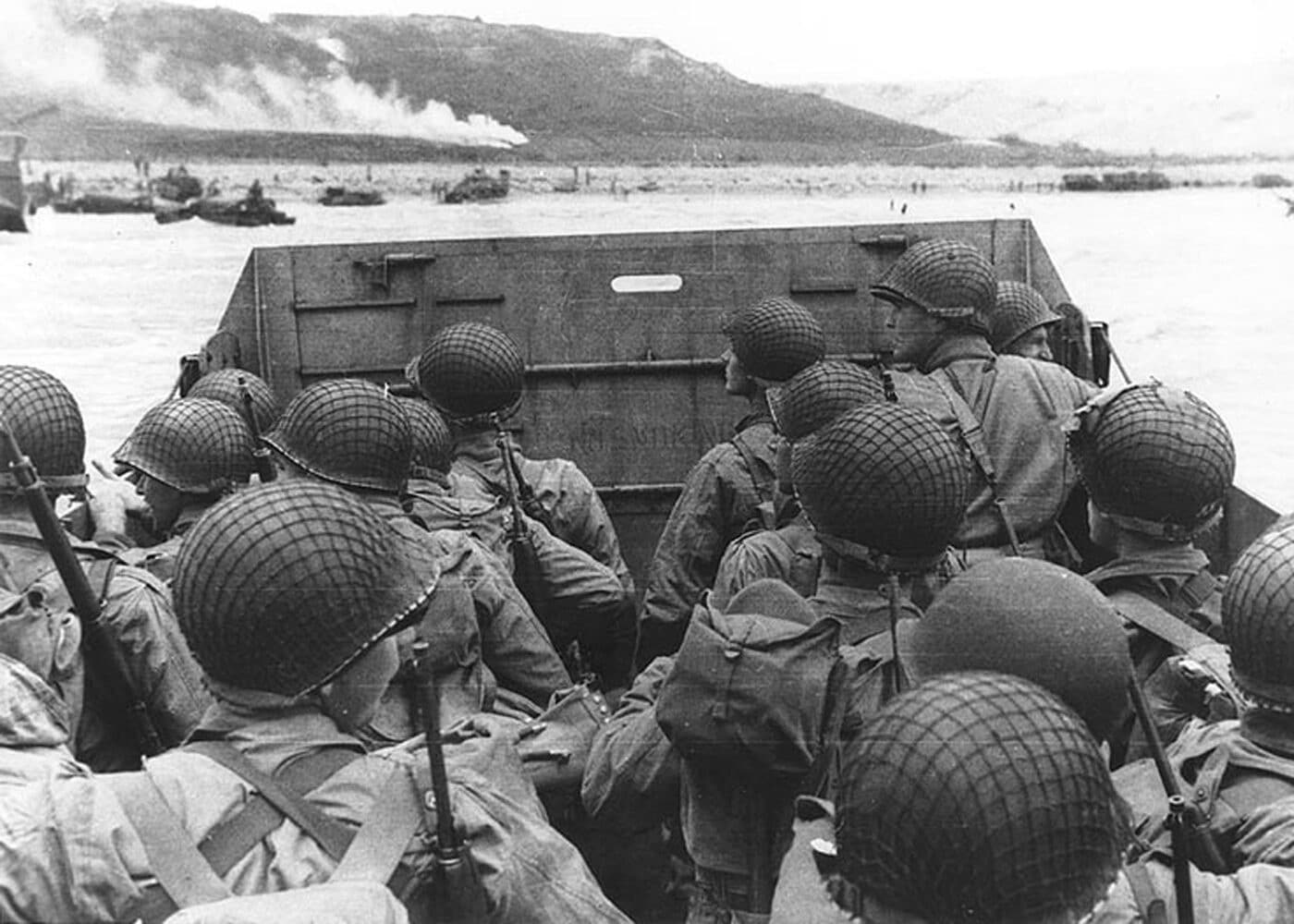
More than 22 million M1 helmets were produced during the Second World War, and it was used in every theater of operations and also supplied to many U.S. allies and partners.
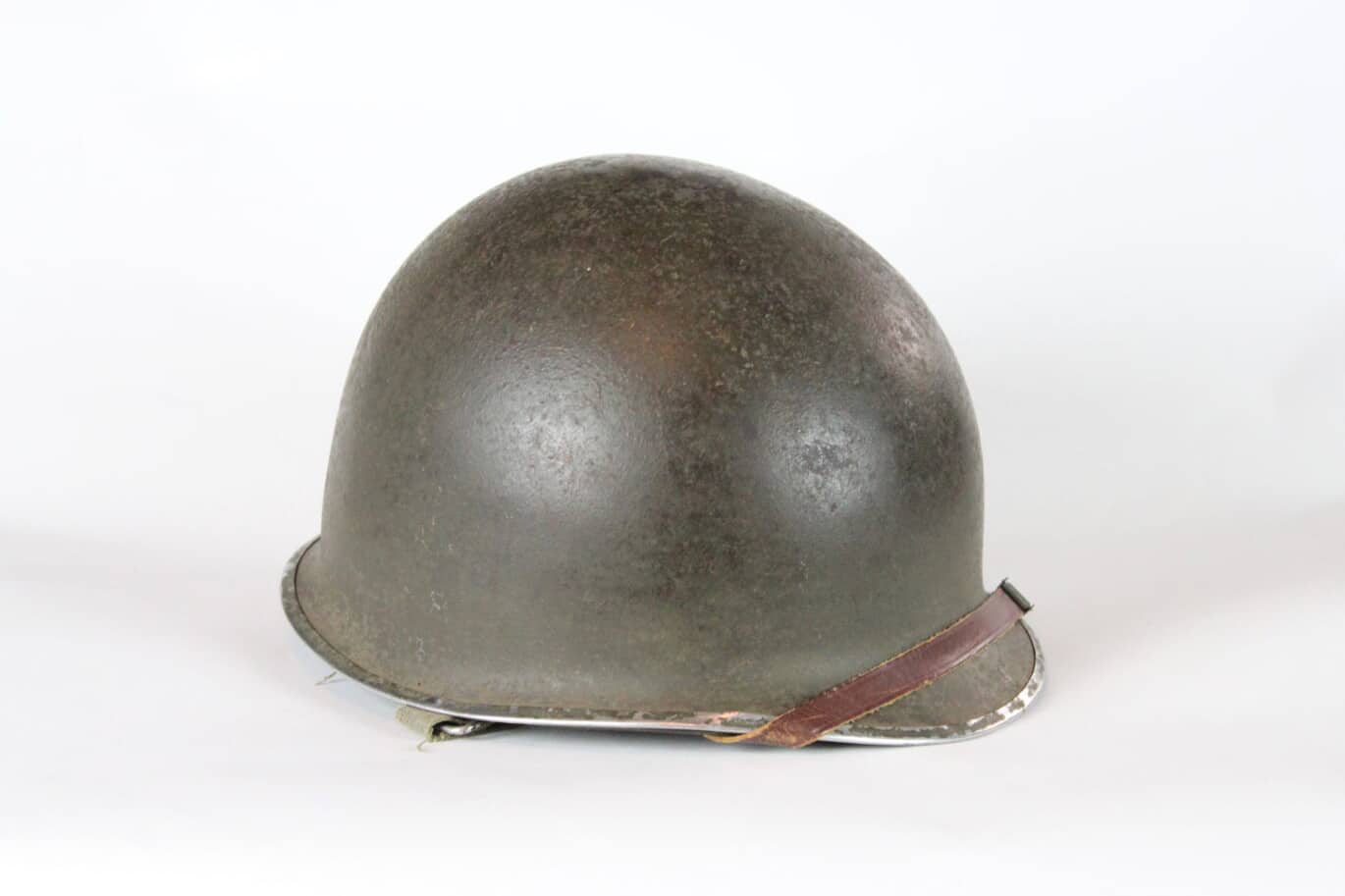
When the smoke cleared from the Second World War, the threat of another war — one with the Soviet Union — was already in the air, but the M1 helmet remained in service with some minor changes, including a new chinstrap system that featured an improved “hinge” that allowed it to be better adjusted while holding in the liner.
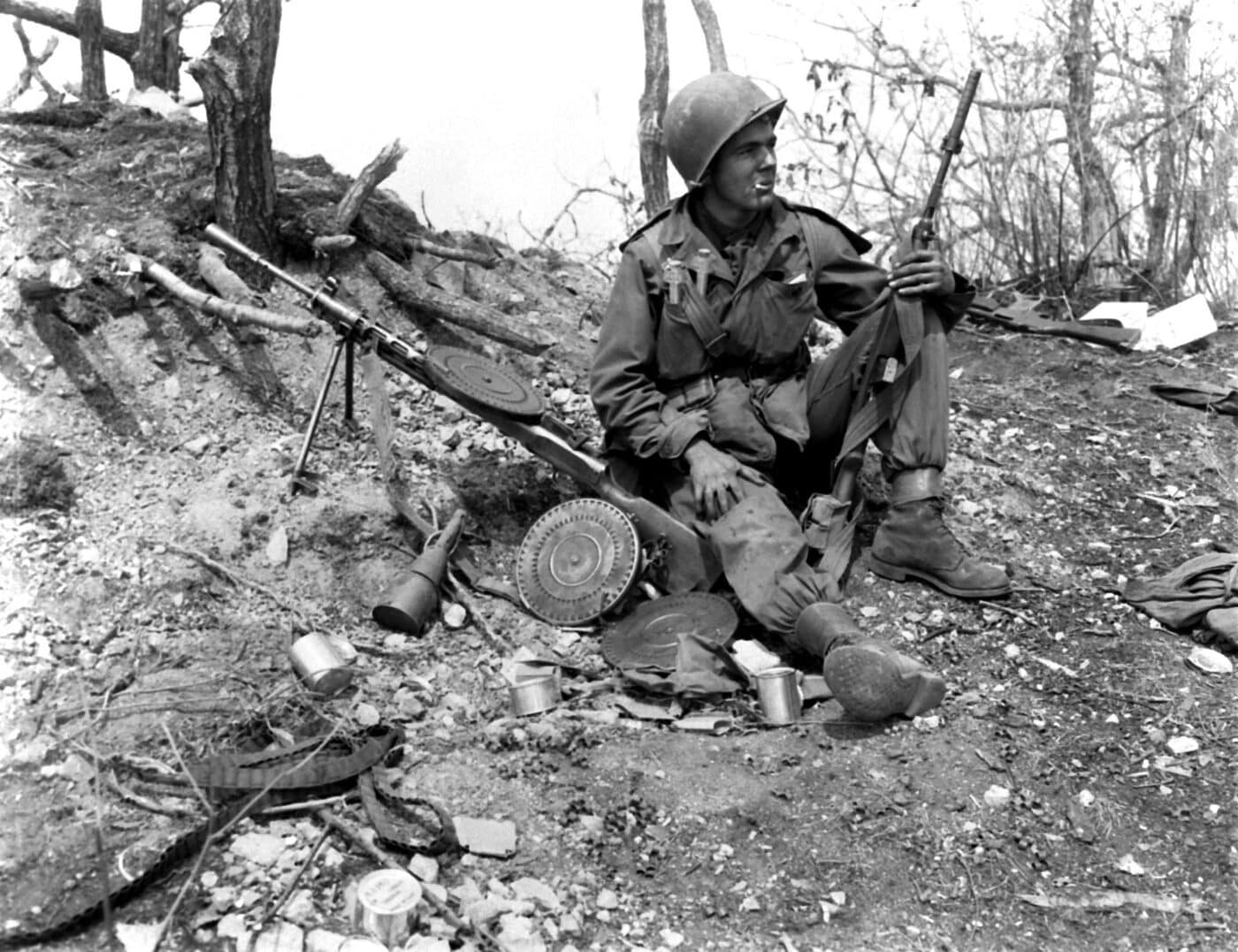
In fact, many of the M1 steel helmets used in the Korean War were World War II surplus that were repainted a slightly brighter shade of green.
US Helmets in Vietnam and Beyond
The M1 helmet was still in use during the Vietnam War; however, the color of the steel shells was changed again in 1966 to “Munsell Y10,” a lighter shade of olive green. In addition, the old T-1 chinstrap was finally replaced with a cotton and nylon web chinstrap with a chin cup and adjustment buckles on both sides. The biggest improvement, however, was to the liner, which was constructed of laminated nylon material that replaced the old resin-impregnated cotton duck model.
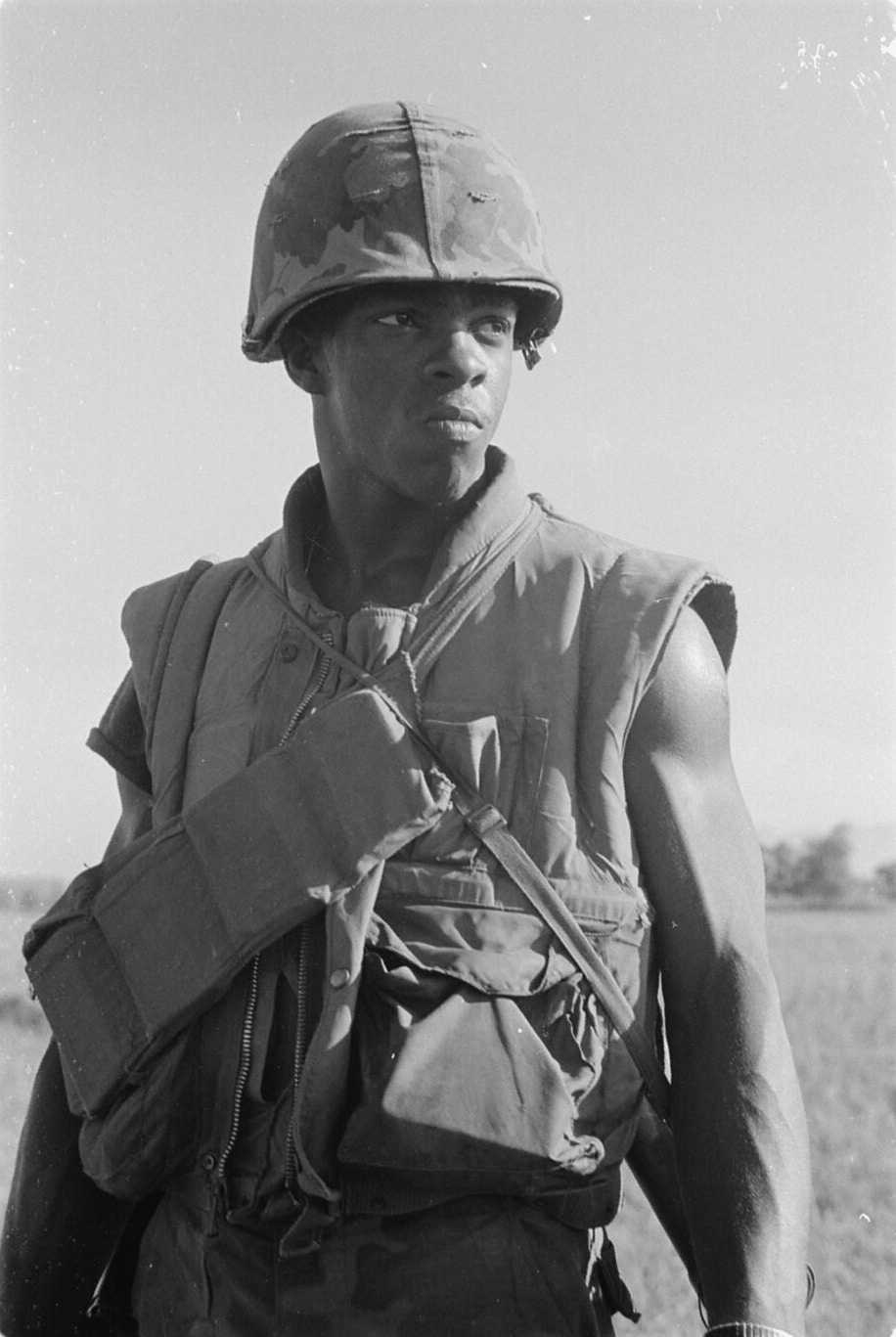
The new pattern liners were meant to offer improved ballistic protection, and also featured an adjustable suspension headband and nape strap to stabilize the liner to the head. The results were mixed, and some soldiers even preferred the older model liner.
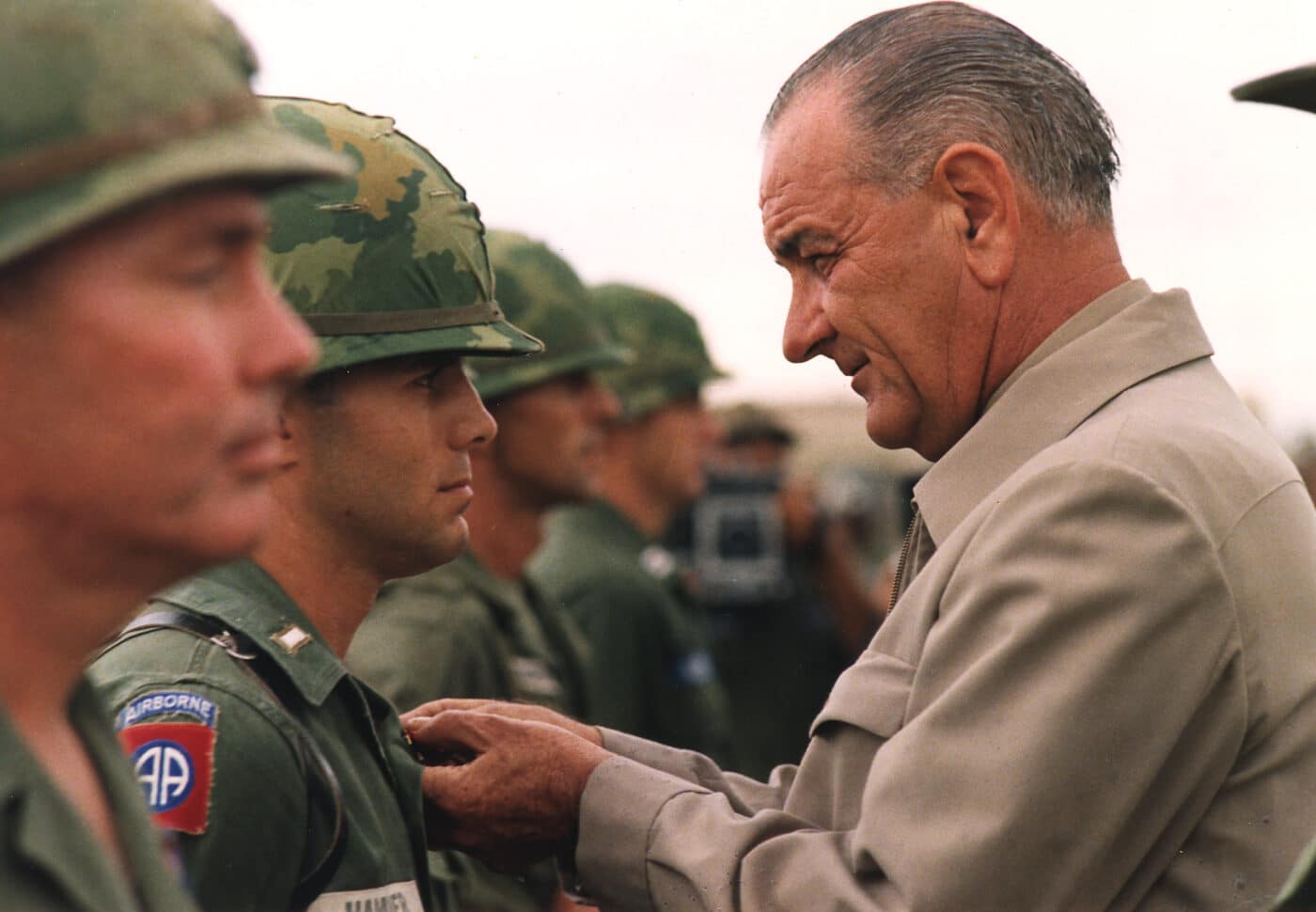
The other update was that in the field the M1 helmet was worn with a newly-developed cloth helmet cover, which was designed to reduce the sheen and the outline of the wearer’s head. The “Mitchell Pattern camouflage” had been developed for use in a war with the Soviet Union, and it featured leaves in green colors for spring/summer with brown colors and earth tones for the fall/winter.
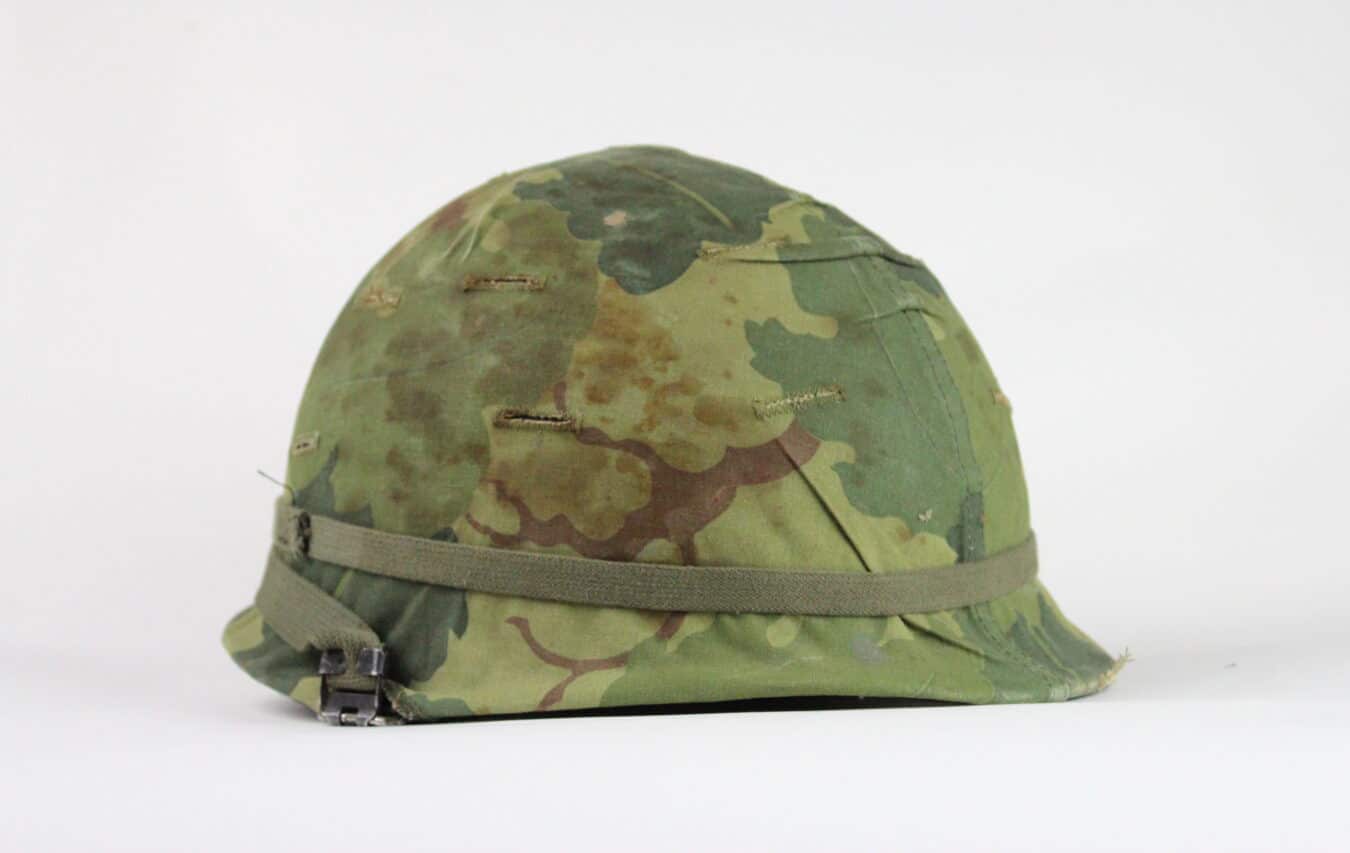
While it may have been suitable for temperate climates, such as the United States and Western Europe, it was utterly ill-suited for tropical zones, yet it is still the iconic cover that today remains associated with the Vietnam War.
Return of the Sun Helmet
The sun helmet or “pith helmet” had also been authorized early in the war as part of the utility uniform. Unlike the earlier pattern helmets that had been made of cork, these were made of pressed fiber and based on a private purchase British style helmet that was sold in the Caribbean at the turn of the 20th century.
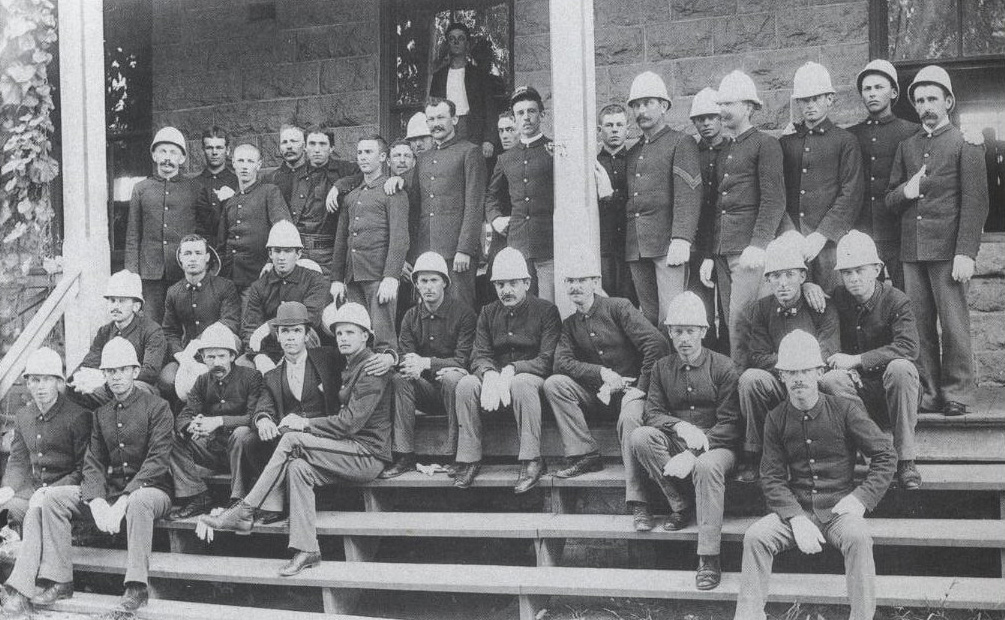
The United States Marine Corps was the first to adopt the helmet just prior to the Second World War, after actions in Haiti. These saw service as a training helmet and in rear areas of operation, and in Vietnam, it was issued to engineer and support troops.
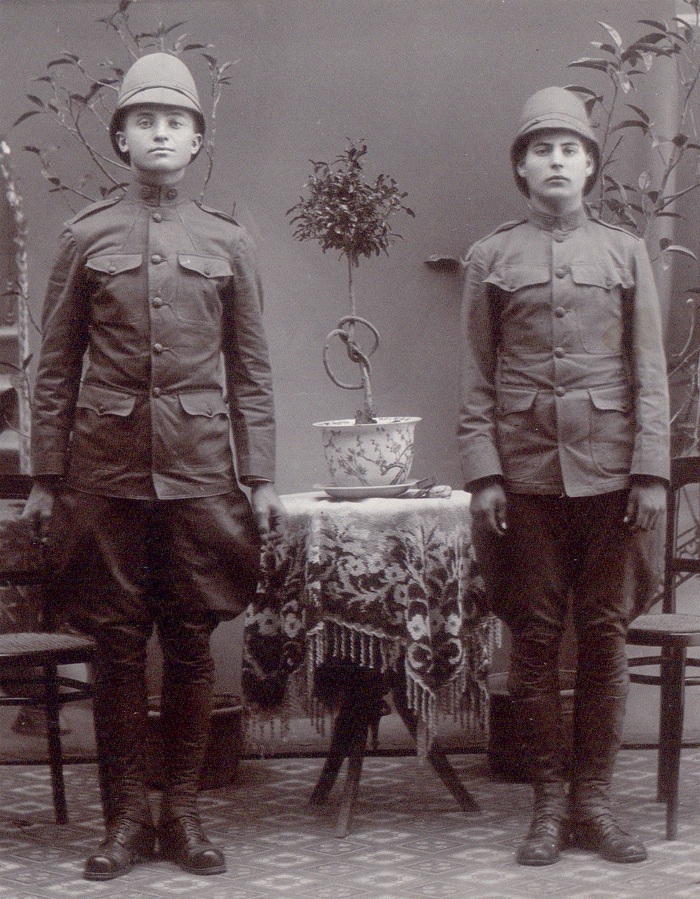
It was gradually phased out in favor of the helmet liner for use when a steel helmet wasn’t required, in part because of the difficulties in supplying multiple helmets, but also because some senior officers had convictions that the sun helmet symbolized former occupation attire while many troops had the feeling that it too closely resembled the People’s Army of Vietnam (North Vietnamese Army) sun/pith helmet.
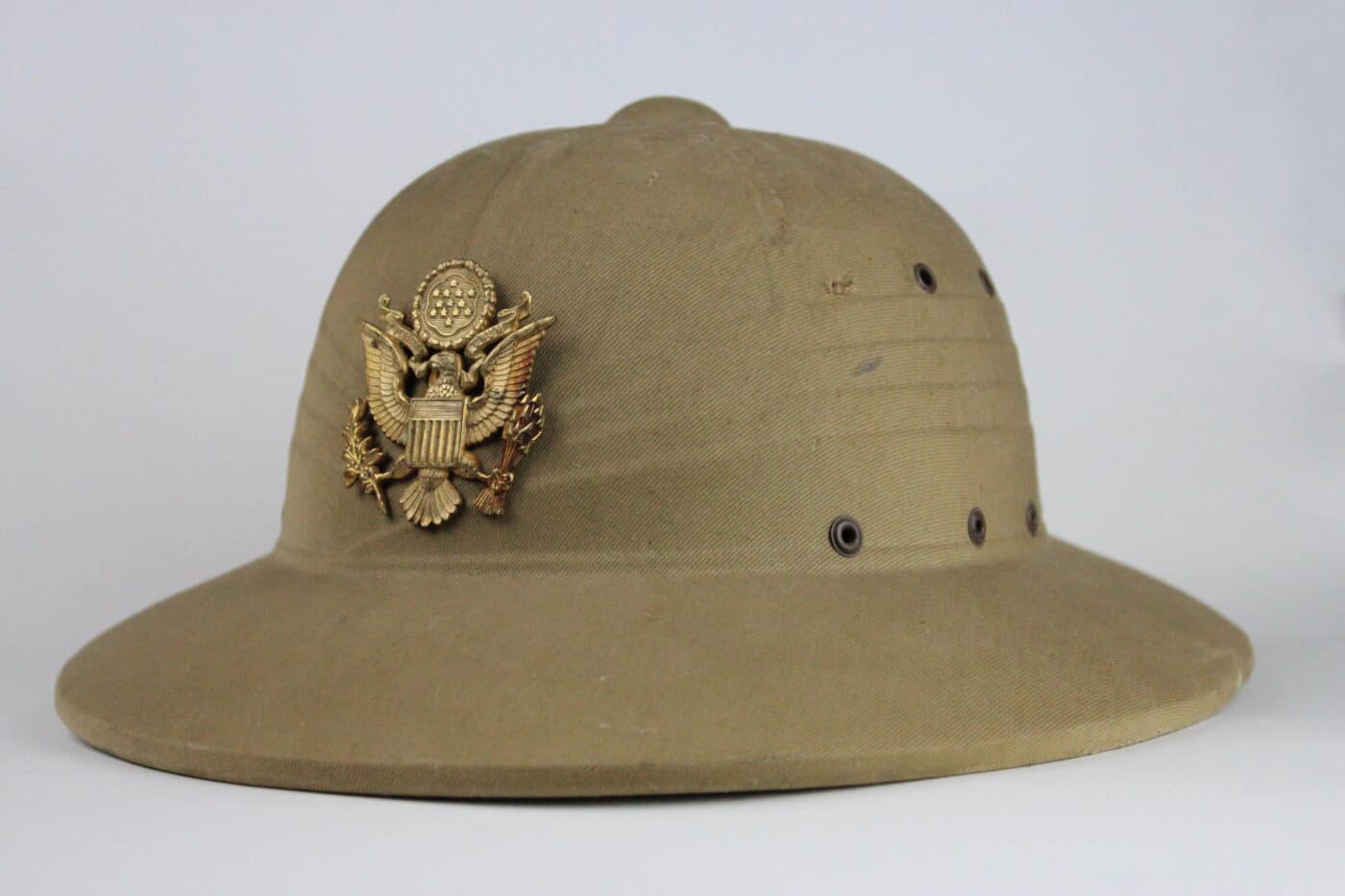
However, the pressed fiber helmet continues to be worn by the USMC instructors on the rifle range — making it one of the longest-serving helmets in U.S. military history.
Modern American Military Helmets
As the Cold War dragged on it became apparent to U.S. military planners that the M1 steel pots that had been designed for use in the Second World War wouldn’t be ideal in a modern conflict.
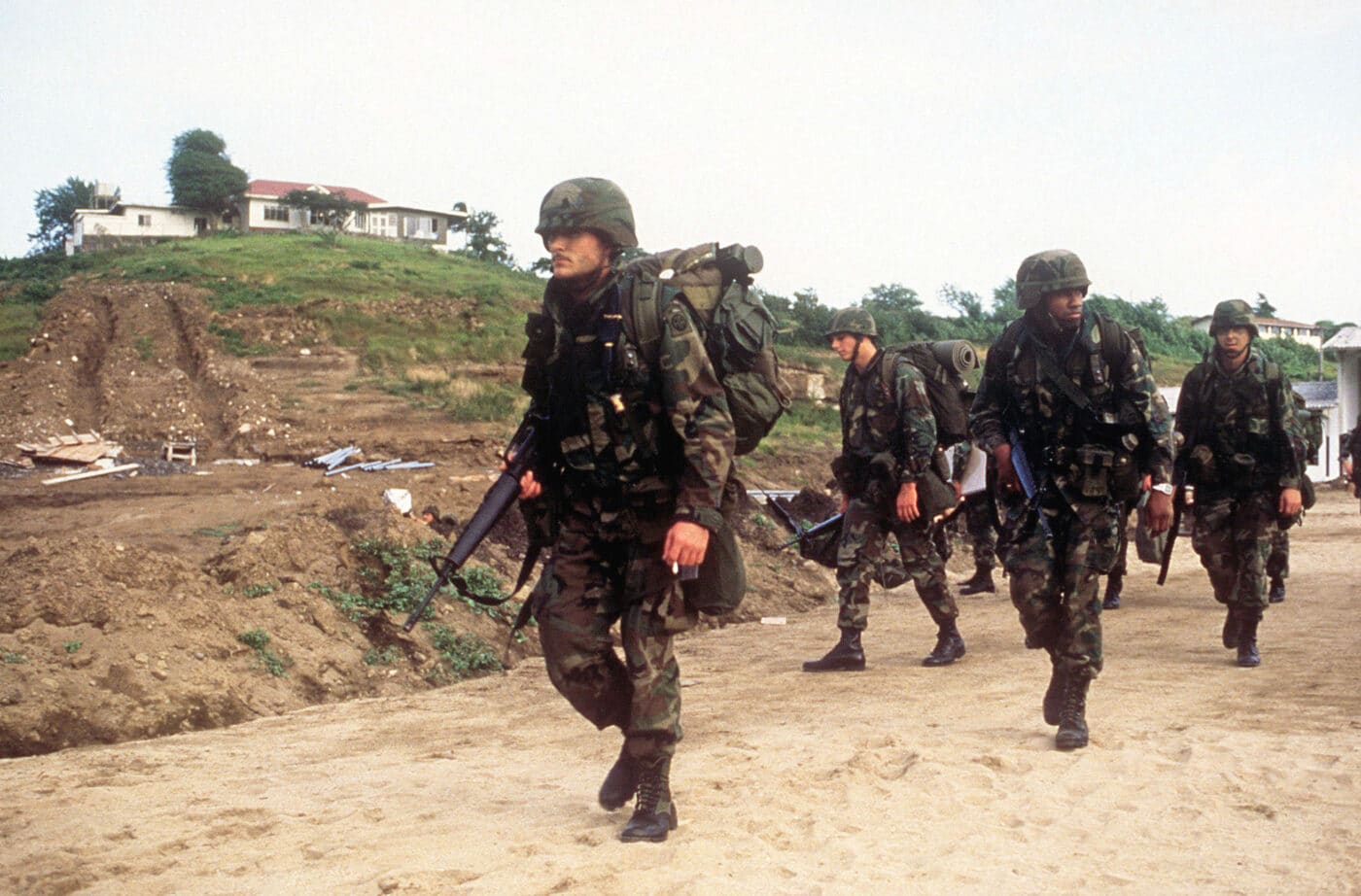
A number of helmet patterns were tested, as well as materials including titanium, aluminum and even glass-reinforced plastic. After numerous trials during the Cold War, the M1 steel helmet was finally phased out in the early 1980s when the Army introduced the Personnel Armor System for Ground Troops (PASGT), which consisted of a Kevlar helmet and a ballistic vest.
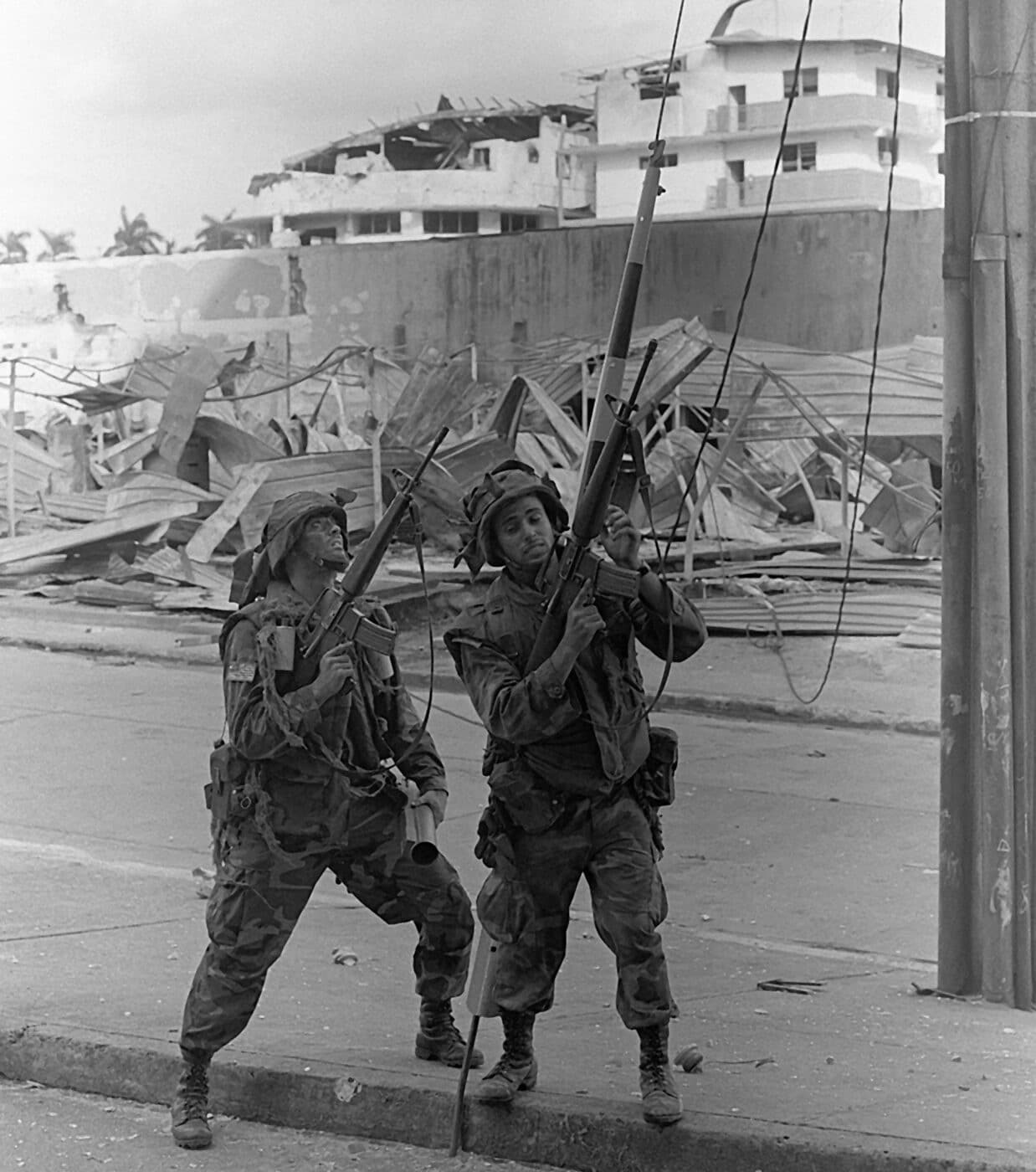
The PASGT system was first used in combat in 1983 during Operation Urgent Fury in Grenada. It was later used in Operation Just Cause, the 1989 invasion of Panama, and during the Gulf War in 1991 followed by operations in Somalia in 1993, as well as in various peacekeeping operations around the globe.
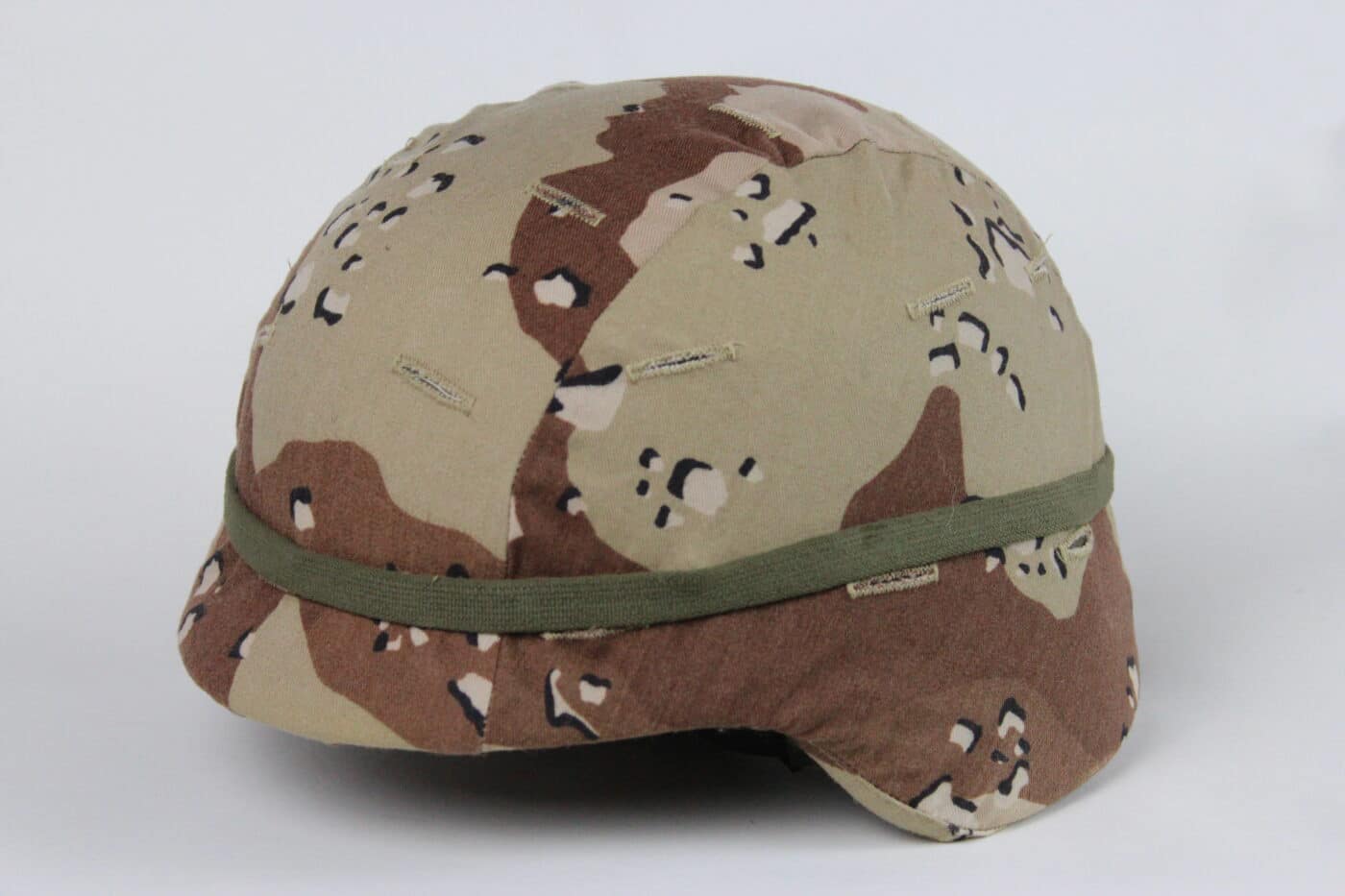
In 2003, the U.S. Army began replacing the PASGT with the Advanced Combat Helmet (ACH), which is based on the Modular Integrated Communications Helmet (MICH). Designed to provide protection from a 9mm bullet, and featuring a pad suspension system with a four-point chinstrap, the helmet was lighter and offered improved comfort.
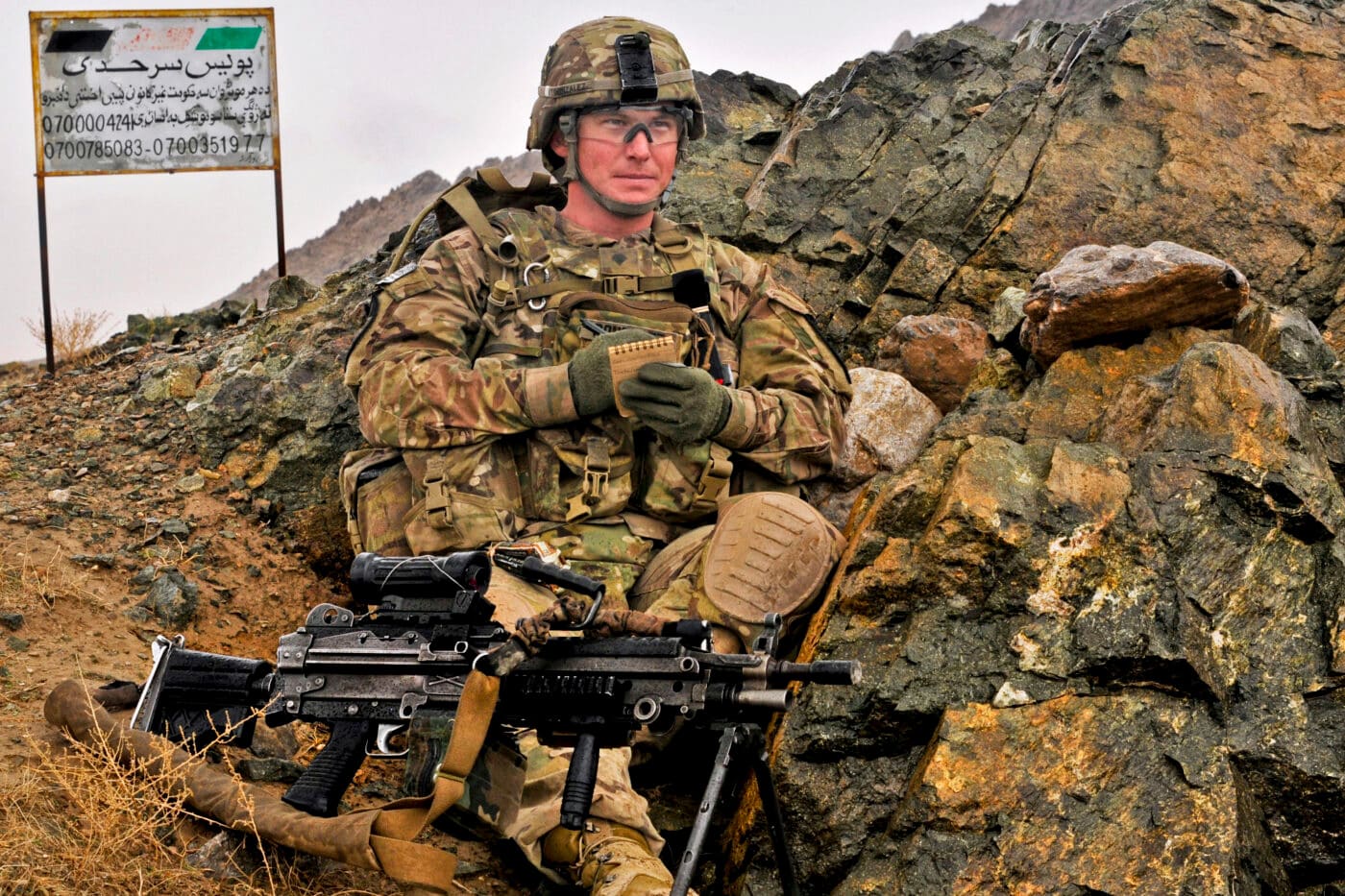
Its profile featured less flare than the prior design, which was meant to allow for greater mobility of the wearers’ head. The ACH was short-lived, as it was quickly replaced by the Enhanced Combat Helmet (ECH), an improvement upon the ACH from which it derived. Seeing the issue of head injuries during the Global War on Terror (GWOT), both the ACH and the newer ECH are now being replaced by the Integrated Head Protection System (IHPS)
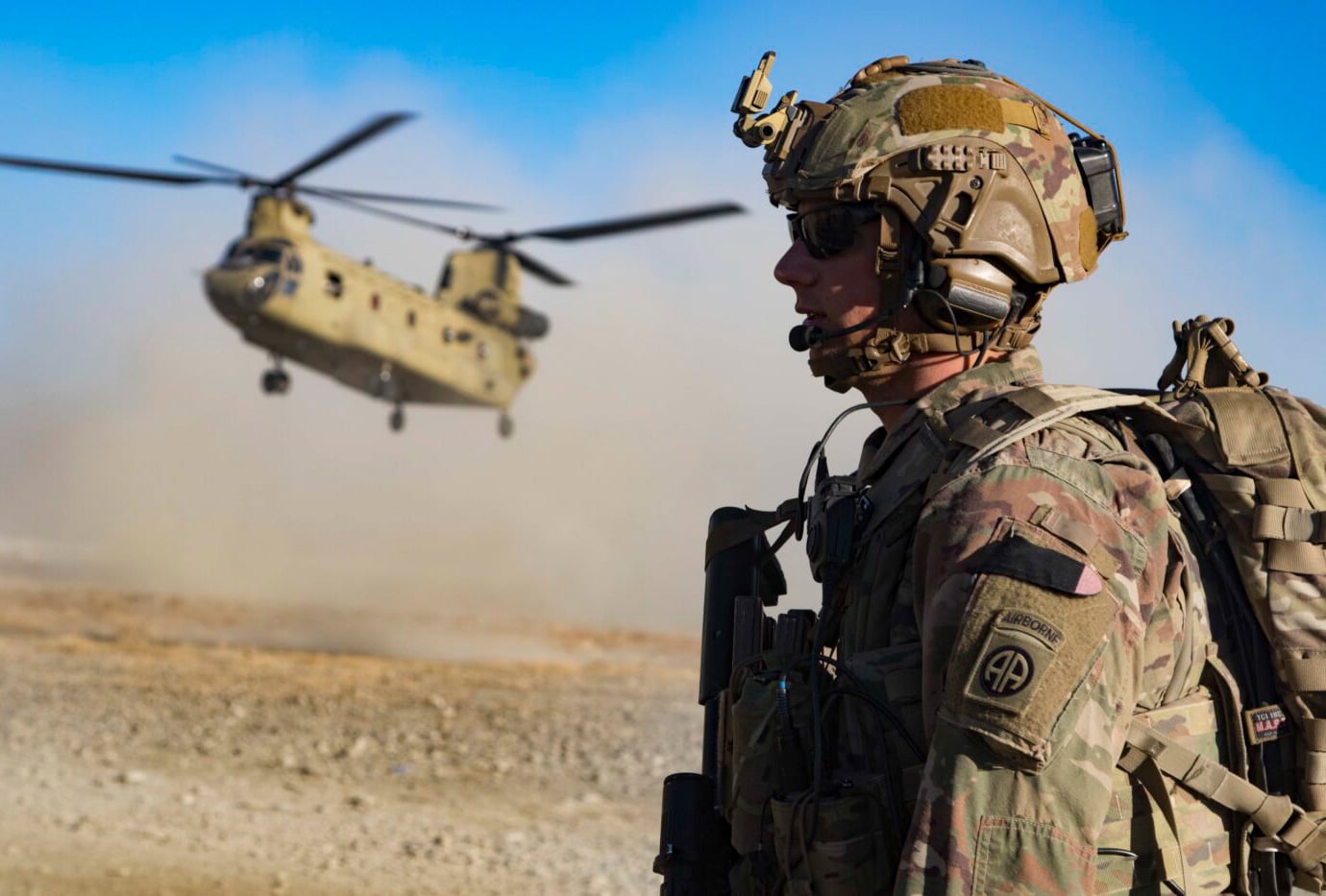
Developed as a replacement for the ACH/ECH in 2013 under the U.S. Army’s Soldier Protection System program, the IHPS was intended to improve soldier protection and performance while reducing the weight of the soldier’s Personal Protective Equipment. The helmets are also meant to help address traumatic brain injuries. The IHPS had been deployed to some units serving in Afghanistan, Iraq and Syria — and will be adopted service-wide by the U.S. Army by the end of the decade.
Helmets have certainly come a long way in the past two and a half centuries. Who knows where they will head in the next one!
Editor’s Note: Please be sure to check out The Armory Life Forum, where you can comment about our daily articles, as well as just talk guns and gear. Click the “Go To Forum Thread” link below to jump in and discuss this article and much more!
Join the Discussion
Continue Reading
Did you enjoy this article?

 255
255






